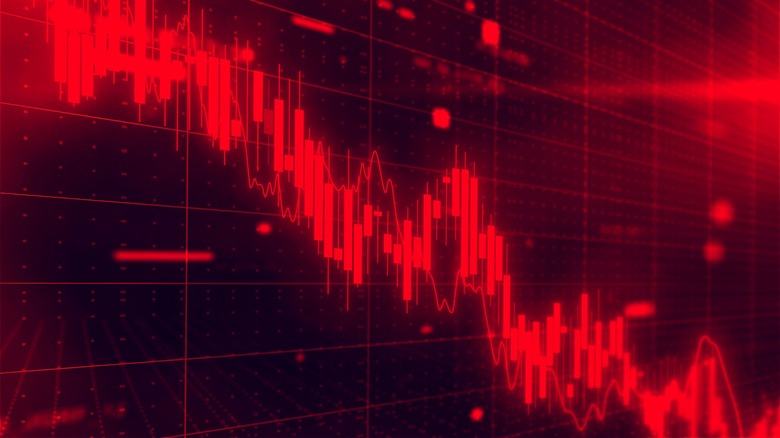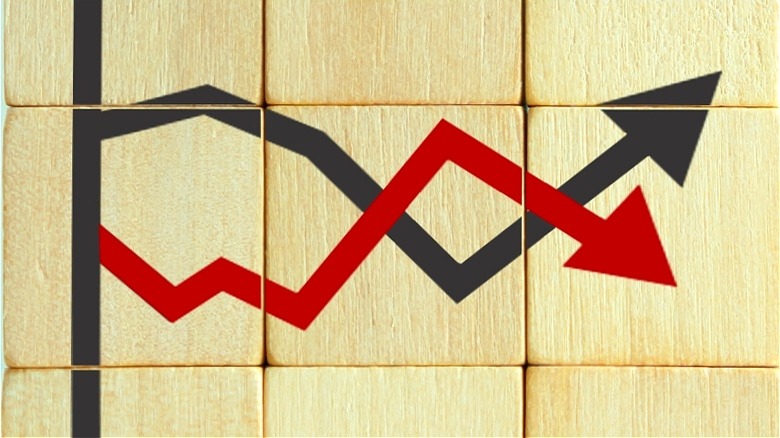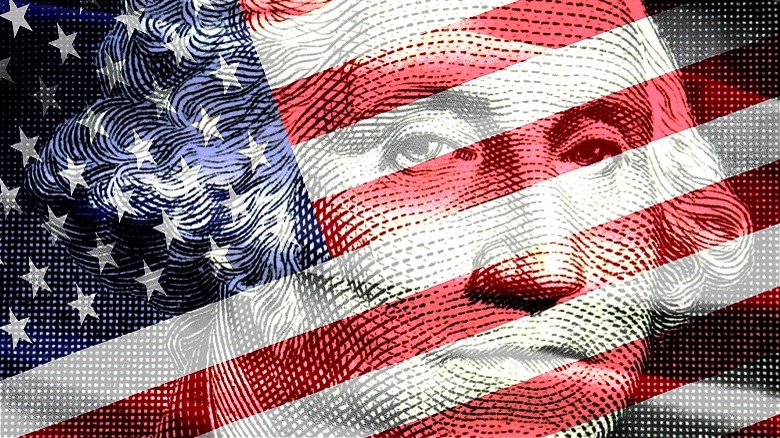Red Flags Of Recession: Could The US Be Heading Toward One?
The term recession has been thrown around consistently for the last several years. From tracking economic growth markers to watching U.S. employment rates, keeping the country from entering a recession has been a high priority. This is especially true for agencies like the Federal Reserve, of which the Federal Open Market Committee not only increased the federal funds interest rates but has also kept them high in an attempt to slow the post-pandemic economy. Yet, prolonged strategies like increased interest rates (which were first hiked in March 2022) can and have been extremely difficult for consumers looking to borrow money. While a significant part of why the Fed raised rates was rooted in avoiding another potential economic recession, the prolonged nature of these increases might have you questioning just how likely it is for the country to face another downturn.
For starters, it's important to understand the basics of what exactly a recession is before looking at factors that could potentially signal the United States is heading for one. A recession is a decline in economic activity that can last for anywhere from a few months (such as the two-month COVID-19 recession of 2020) to years (like the 2007-2009 Great Recession). Generally speaking, a recession is declared in the wake of a few specific economic factors: negative gross domestic product, declining retail sales, long-term contracting of income and manufacturing measures, and rising unemployment. While recessions are technically a natural part of the regular business cycle, their impacts can have lasting effects on a country's economy.
Recession red flags
Perhaps the most important thing to understand about a recession is that any combination of the factors that mark a recession can also be used to predict one. Increases in unemployment or changes in consumer spending habits (which can lead to a decline in GDP) can both indicate the country is heading for a recession. However, while individual factors can face significant changes, they're not in and of themselves guarantees of a recession. How these factors connect to each other is ultimately at the heart of what could cause a potential recession. For instance, unemployment on its own is not necessarily enough to cause an economic decline; however, a subsequent drop in consumer spending (and, therefore, GDP) combined with declining retail sales from consumers not having income to spend could easily lead to a domino effect, all from an increase in unemployment rates.
Other notable factors that can (and currently do) affect the U.S. economy's potential for recession include inflation and subsequently high interest rates put in place to try and cool it. Interest rates hit a 40-year high, 9.1%, in June 2022, however, by May 2024, they sat at 3.3%, according to year-over-year consumer price index inflation rates data from the U.S. Bureau of Labor Statistics. While this is definitely an improvement, other measures like the personal consumption expenditures (PCE) price index are still above the Federal Reserve's target of 2%. This means it is still too soon to declare inflation a non-issue, and also means interest rates will more than likely stay high in the interim.
The economy today
While a lot of different factors can affect the economy — and the potential for a recession — the country is currently in a bit of a waiting period while multiple factors play out. Rob Haworth, senior investment strategy director for U.S. Bank Wealth Management, told the banking institution that while there don't appear to be signs of "serious recession risk" at present, a big question remains. Explained Haworth, "Nevertheless, a big question that may drive the markets and the timing of Fed rate cuts is whether consumers can continue spending at a sufficient pace to keep the economy growing."
While higher interest rates have cooled inflation, there are signs these increased rates are beginning to negatively impact consumer behaviors. This could lead to some potential recession factors such as falling retail sales and even decreased gross domestic product. This said, while the situation is still precarious, and certain Fed decisions could still ultimately tip the scales one way or the other, many agree the U.S. economy is facing a soft landing that will more than likely be marked by slow GDP growth but not signal a full recession. However, with several inflation measures stubbornly staying higher than the Fed's goals, chances are good that interest rates will continue to remain high. This, on top of increases in debt delinquencies and a recent increase in unemployment rates (4.1% as of June 2024, the highest rate since November 2021), means it's simply too soon to say how the economy will eventually land.


